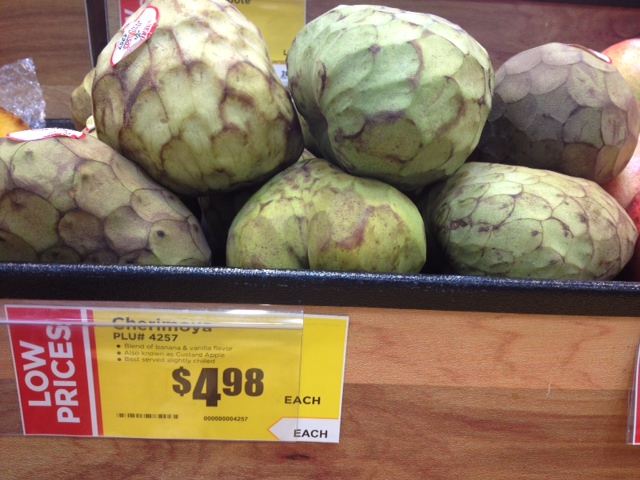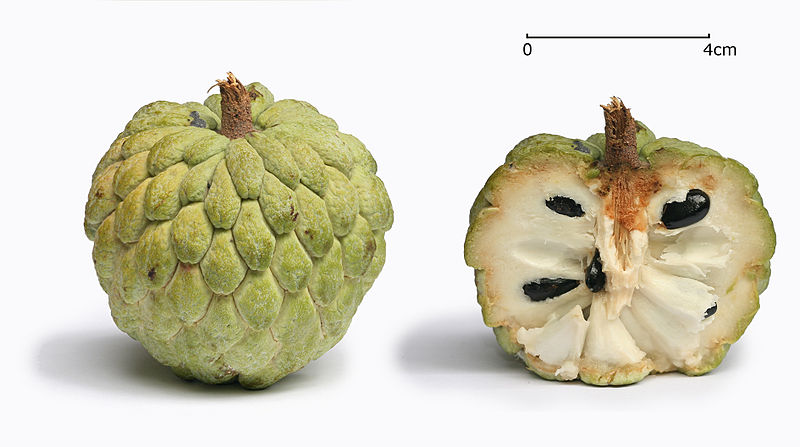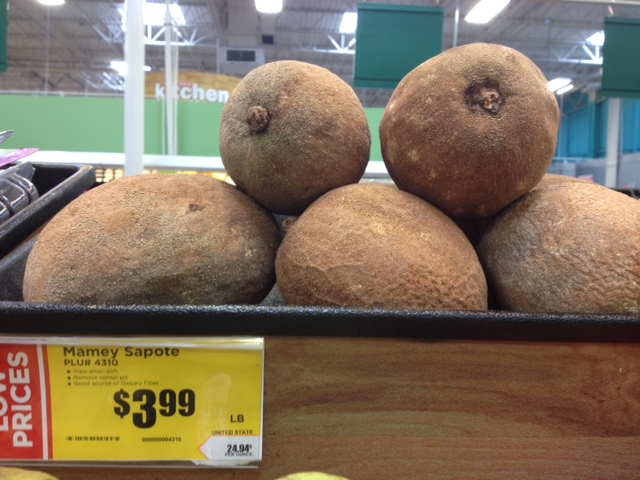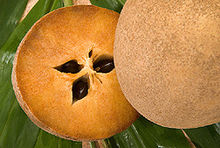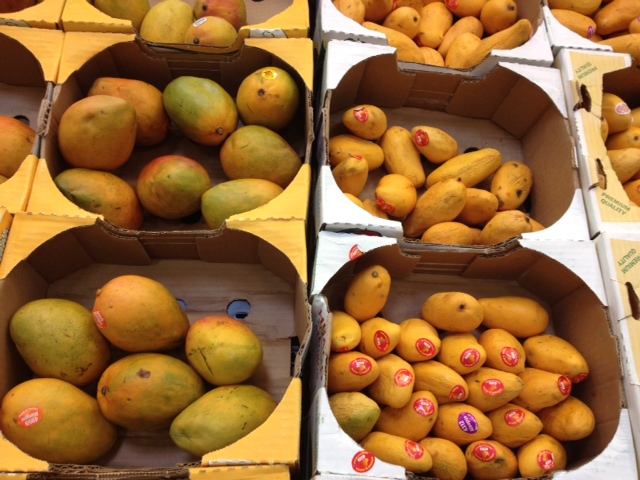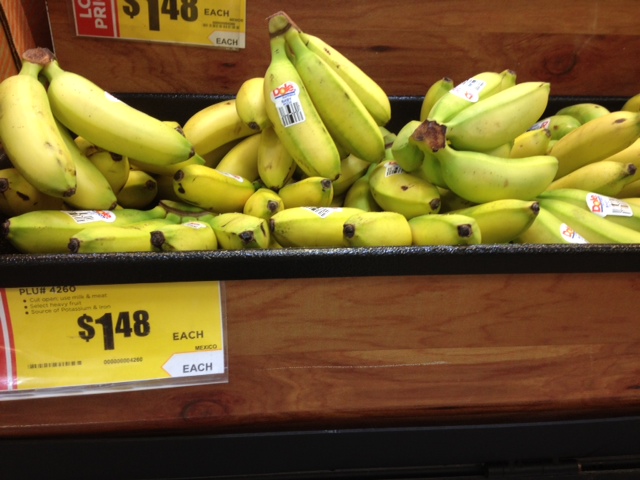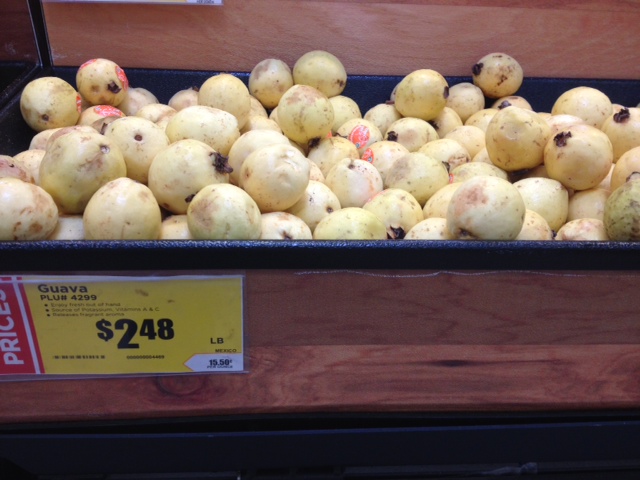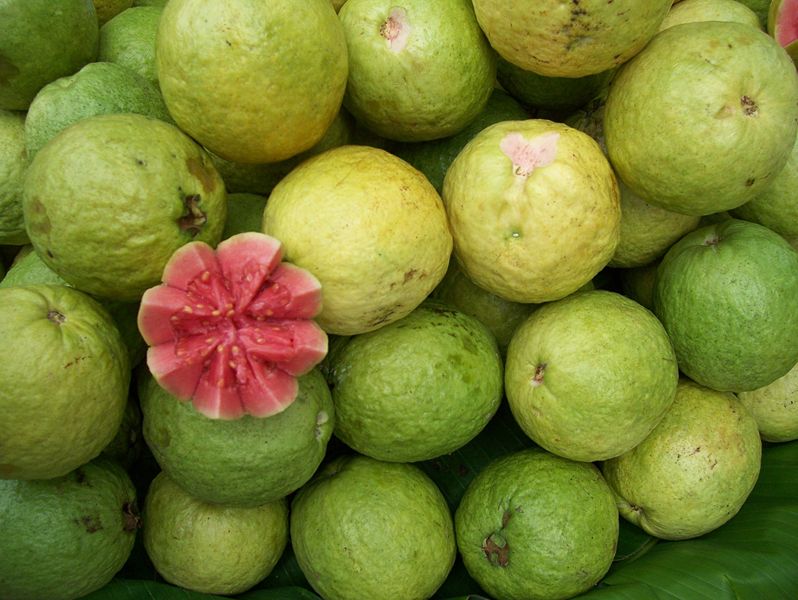Today was just going to be a quick visit to the grocery store to pick up some fresh produce, but I was floored by the kind of exotic fruits available in HEB grocery that my foodie eye was mystified by the rare fruits and got lost in faraway memories of exotic fruit.
Coming from India, the tropical land of exotic fruits, I crave all the things we don’t find in the United States. Hence anything exotic appeals to our senses. I spend some time touching and smelling and snapping pictures and buying some of these exotic fruit . Interestingly these exotic fruits are almost what I have been craving for but not really the same. But anything in better than nothing and exotic is exotic;)
So dear Austinites, if you want to try any of these exotic fruits, just drop in at your HEB Plus store in Austin for your pick!
I saw Cherimoya/Custard Apple but was craving for Seetaphal/ Sugar Apple/ Annona Squamosa ! The fruit has a green exterior cover with interior of delicious creamy white with seeds embeded which you toss off and enjoy the fleshy white part of the fruit. The difference between the two is the seetaphal is absolutely sweet.(yum…..)
The cherimoya, also spelled chirimoya, is the fruit of the species Annona cherimola.grown throughout South Asia, Central America, South America, Southern California, southern Andalucia & South of Italy (Calabria).The fruit is oval, often slightly oblate, 10–20 cm long and 7–10 cm in diameter, with a smooth or slightly tuberculated skin.
The fruit flesh is white and creamy, and has numerous dark brown seeds embedded in it. The fruit is fleshy and soft, sweet, white in color, with a sherbet-like texture, which gives it its secondary name, custard apple.(http://en.wikipedia.org/wiki/Cherimoya)
Annona Squamosa a are edible fruits called sugar-apples, species of the genus Annona and member of the family Annonaceae.(http://en.wikipedia.org/wiki/Annona_squamosa)
I saw some Extra Large Sapote called Mamey Sapota and craved for the smaller version of the similar fruit- Sapota/ Sapodilla/Manilkara Zapota . The fruit has brown rough skin, the inside fleshy fruit is pinkish orange and sweet. It has couple of seeds which you pit out.
The Mamey Sapote (Pouteria sapota) is a native to Central America, Mexico ,Nicaragua, Caribbean, and South Florida .Also called mamey, zapote colorado (Costa Rica), and zapote rojo (South America).(http://en.wikipedia.org/wiki/Pouteria_sapota)
The fruit is about 10 to 25 cm (4 to 10 inches) long and 8 to 12 cm (3 to 5 inches) wide and has orange flesh. The brown skin has a texture somewhat between sandpaper and the fuzz on a peach. The fruit’s texture is creamy and soft. The fruit is eaten raw or made into milkshakes, smoothies, ice cream and fruit bars. It can be used to produce marmalade and jelly. Some consider the fruit to be an aphrodisiac
Manilkara zapota, commonly known as the Sapodilla, native to Mexico, Central America and the Caribbean.[3] Philippines, India, Thailand, Malaysia, Cambodia, Indonesia, Bangladesh .The name “zapota” ultimately derives from the Nahuatl word tzapotl [‘t͡sapot͡ɬ] by way of the Spanish word zapote [sa’pote].(http://en.wikipedia.org/wiki/Sapote)
Mangos
I talked enough about mangos in my previous mango blog:http://hotsweetspicyrecipes.com/mango-mania/
or check -http://en.wikipedia.org/wiki/Mango
Baby Bananas
The baby bananas are almost the same as Lady Finger Bananas or Elaichi Bananas/Nino Banana but the Elaichi Bananas are sweeter and skin is thinner.
One of the sweetest and smallest banana varieties, the baby banana is also known as the Finger Banana, Ladyfinger Banana, Nino Banana, Murapo, and Orito. Just about 3 inches (7.5 cm) long, when ripe, it has a thick, bright yellow peel and pale, creamy, dense flesh. The baby banana is native to Colombia, where it grows on a tree-size plant in bunches of “hands” that may each contain ten to 12 “fingers,” or bananas. These Bananas contain resistant starch and prebiotic fiber, two compounds that can aid in weight loss!
The Guavas at the store are smaller and riper than the sweet green Guavas I used to love to bite into when in India. But these are great for jelly if you are into that!
Guavas are native to Mexico, Central America, South America,Africa, South Asia, Southeast Asia, Caribbean, subtropical regions of North America, New Zealand and Australia.
Guava fruit, usually 4 to 12 centimetres (1.6 to 4.7 in) long, are round or oval depending on the species. The outer skin may be rough, often with a bitter taste, or soft and sweet. Varying between species, the skin can be any thickness, is usually green before maturity, but becomes yellow, maroon, or green when ripe.
“A table, a chair, a bowl of fruit and a violin; what else does a man need to be happy?”–Albert Einstein…….. Wonder which fruit he was eating, but I bet it was exotic! –




